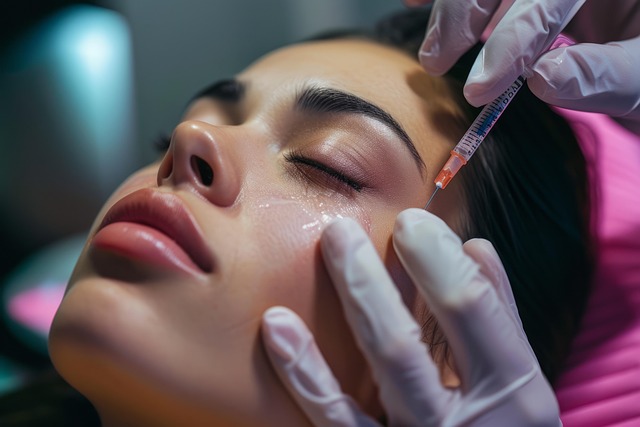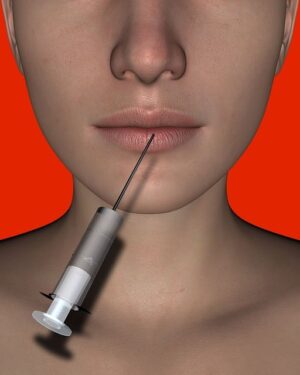Botox treatments have become a popular, non-invasive anti-aging method involving injecting botulinum toxin into muscles to temporarily paralyze them and smooth wrinkles. Lasting 3-6 months, these quick (15-30 minute) procedures offer minimal discomfort and rapid recovery. Choosing the right clinic and experienced provider is crucial for safety; thorough preparation, including consulting a dermatologist, ensures a secure experience. Post-treatment, mild side effects like redness or swelling typically resolve within 24 hours with proper aftercare. Botox treatments are generally safe but carry potential risks, which can be minimized by selecting a qualified practitioner using sterile techniques and discussing medical history beforehand.
Botox treatments have revolutionized cosmetic procedures, offering a safe and effective way to reduce wrinkles and enhance facial features. This article delves into the world of safe cosmetic Botox procedures, covering essential aspects from understanding the basics of Botox treatments to choosing the right clinic, preparation tips, recovery processes, and managing potential risks. By exploring these key areas, individuals seeking Botox treatments can make informed decisions, ensuring a positive and secure experience.
Understanding Botox Treatments: The Basics

Botox treatments have become a popular choice for individuals seeking to enhance their appearance and reduce signs of aging. At its core, Botox is a protein produced by bacteria that, when injected into specific muscles, temporarily paralyzes them. This action smoothens out wrinkles and fine lines, providing a more youthful look. The procedure is non-invasive and generally considered safe when performed by qualified professionals using sterile techniques.
During a typical Botox treatment, a small amount of the botulinum toxin is injected into targeted areas, such as the forehead, crow’s feet (around the eyes), or neck. The process is usually quick, taking only about 15-30 minutes, and patients can resume their normal activities afterward. It’s important to understand that results vary from person to person and typically last between 3-6 months, after which a follow-up treatment may be recommended to maintain the desired effects.
Benefits of Safe Cosmetic Botox Procedures

Botox treatments have gained immense popularity as a safe and effective way to achieve youthful-looking skin. One of the key benefits is its ability to reduce the appearance of fine lines and wrinkles, providing a subtle yet noticeable enhancement. This non-surgical procedure offers a quick and convenient solution for those seeking to reverse the signs of ageing without extensive downtime.
Additionally, cosmetic Botox procedures are highly customizable, allowing experts to tailor treatments to individual needs. It can target specific muscle groups responsible for dynamic wrinkling, resulting in a more relaxed and smoother complexion. This safety feature ensures minimal discomfort and rapid recovery, making it an appealing option for individuals wanting to maintain their natural beauty while slowing down the ageing process.
Choosing the Right Clinic and Professional

When considering Botox treatments, choosing the right clinic and professional is paramount for a safe and effective procedure. Look for a clinic with a proven track record, licensed professionals, and state-of-the-art facilities. Reputable clinics often have satisfied patient testimonials and positive reviews, which can give you peace of mind.
Additionally, ensure that the practitioner administering the treatments has extensive experience in cosmetic procedures, specifically Botox injections. Ask about their qualifications, certifications, and any ongoing professional development to guarantee they stay abreast of the latest techniques and safety protocols. A well-chosen clinic and expert provider will significantly contribute to a positive and secure cosmetic Botox experience.
Preparation for Your Botox Appointment

Before your Botox treatments, thorough preparation is key to ensuring a safe and effective procedure. Start by consulting with a qualified dermatologist or medical professional who specializes in cosmetic injections. They will assess your skin, discuss your goals, and provide personalized advice. It’s important to disclose any medications, allergies, or medical conditions, as these factors can influence treatment decisions.
On the day of your appointment, arrive early to relax and avoid any last-minute stress. Avoid consuming alcohol 24 hours before and stay hydrated by drinking plenty of water. Refrain from using makeup, lotions, or sunscreen a few hours prior to the procedure to ensure the injection sites are clean and accessible. Following these preparatory steps will contribute to a smoother experience during your Botox treatments.
Recovery and Aftercare: What to Expect

After a Botox treatment, recovery is typically swift and comfortable. You may experience some temporary redness, swelling, or mild pain at the injection sites, but these side effects usually subside within a few hours to a day. It’s advisable to avoid strenuous activities and direct sunlight for the first 24 hours post-treatment to promote optimal healing.
Proper aftercare is essential for achieving the best results from your Botox treatments. This includes keeping the treated area clean and moisturized, applying ice packs as recommended by your provider to reduce swelling, and following any prescribed medication or topical treatments. Remember, staying hydrated and eating a balanced diet can also aid in the healing process, ensuring your body has the necessary nutrients to support skin health and overall well-being.
Potential Risks and Complications to Be Aware Of

While Botox treatments are generally safe and effective, it’s crucial to be aware of potential risks and complications before proceeding with any cosmetic procedure. Common side effects include temporary redness, swelling, or bruising at the injection site. In some cases, patients may experience headaches, muscle weakness, or difficulty swallowing, though these symptoms are usually mild and short-lived.
Less common but more serious complications can occur, including infection, bleeding disorders, or an allergic reaction. It’s important to choose a qualified and experienced provider who uses sterile techniques and follows proper safety protocols to minimise these risks. Always discuss your medical history and any concerns with your doctor before starting Botox treatments.
